How fmcg product use atl and btl sales promotions to increase sales
Advertising consists of all the activities involved in presenting to an audience a non-personal, sponsor-identified, paid-for message about a product or
organization.”
According to American Marketing Association “advertising is any paid form of non-personal presentation and promotion of ideas, goods and services by an identified sponsor”.
Advertising is used for communicating business information to the present and prospective customers. It usually provides information about the advertising firm, its product qualities, place of availability of its products, etc. Advertisement is indispensable for both the sellers and the buyers.
However, it is more important for the sellers. In the modern age of large scale production, producers cannot think of pushing sale of their products without advertising them. Advertisement supplements personal selling to a great
extent.
Advertising has acquired great importance in the modern world where tough competition in the market and fast changes in technology, we find fashion and taste in the customers.
ATL & BTL Agencies refer to two different styles of marketing agencies, especially in promotion marketing and communication.
“ATL” stands for “Above The Line”, meaning that the advertising is going to be deployed around a wider target audience, e.g. television (TVC), radio, or billboards. applicable when a product is directed for a broader spectrum of consumers, for example a soft drink company might contract an ATL advertising agency to develop ads targeting a broad audience.[1]
“BTL”, or “Below The Line”, suggests that the advertising is going to target a specific group of potential consumers.[2] BTL advertising agencies will be hired to help companies to develop ads and promotion strategies in a creative way, directed to certain groups of people, using tools like direct emailing, or direct product demonstrations for a specific group of people, like giving away vitamin samples at the door of a famous gym.
Is Social Media an ATL activity or a BTL activity?
It’s an interesting subject as Social Media can be considered as ATL or BTL depending on the approach.
For those, who do not understand ATL & BTL, let me explain it here. Social Media: Is this ATL, BTL or TTL
ATL: Above the line
ATL promotions are generally the mass promotion campaigns. Such campaigns are done basically for brand building, awareness and increasing the brand recall. Best examples are TV, Radio, Print, etc.
BTL: Below the line
BTL promotions are specific or targeted promotions to ensure direct interaction with a specific audience. The best example would be flyers distribution etc.
There is a new term called TTL (Through the line), which is a mix or an integrated approach for both ATL & BTL. And I would put Social Media as TTL, as it is a mix of both based on the planned promotions approach.
Is Social Media BTL or ATL?
Social Media as ATL:
Generic promotions of the brand which are not very specific to a set of an audience can be considered as ATL.
Facebook Mass Advertising (broader targeting), Facebook generic brand postings, Google Display Ads & Mass Mailing campaigns can all be considered as ATL.
Let me put an example of Facebook postings of my current clients & how 2 different content pieces can be positioned in ATL & BTL respectively.
Facebook Post as ATL
Social Media as BTL:
Content specific to a niche audience, well-targeted advertising, lead generation campaigns can all be considered as BTL activities.
Below post can be a classic example of social media for BTL as the communication is pretty clear that it is for a specific audience in Pune.
Mass mailing campaigns on one had can be treated as ATL, however now mailing campaigns does offer a lot of customization options so that your mass mailers also appear to be more personalized. For example, emails containing your name, company name, etc (Merge Tags of MailChimp).
On similar lines a tweet can be considered as an ATL promotion, however, a mention/retweet is a BTL activity.
From a customers perspective, we always want more personalized communication by brands. Social Media is enabling personalized mass promotions. It means the line between ATL & BTL is getting blurred with amazing features offered by digital channels and the advancement of technologies.
When it comes to marketing, people often confuse Above The Line (ATL), Below The Line (BTL) and Through The Line marketing (TTL). These terms are often bandied together, which is why they are frequently mistaken for one another. Here we go through the definitions and when’s best to use them.
What are the differences?
Above the line (ATL)
ATL uses mass media to appeal to a large number of audiences, these include media channels such as TV, magazines, newspaper and radio advertising. This kind of marketing is untargeted towards the individual and is good for creating brand awareness and goodwill. Due to a large network being covered, companies would generally use ATL for new product launches, or to create impact surrounding a brand.
For certain markets, such as household products where almost all houses will have at least a few cleaning items. Companies such as Ariel frequently uses ATL marketing because this has mass appeal. Their communication is targeted to a wider spread of audience to achieve top of the mind awareness amongst consumers, additionally to creating brand recall.
Below the line (BTL)
BTL on the other hand is on the micro level, this marketing or promotion method is much more targeted towards specific groups of people. These include communications such as direct mail, sponsorship, brochures, PR, and email marketing etc. Due to being much more focused, these channels are great for driving conversions, getting a direct response and building customer loyalty.
It is easier to track effectiveness and conversions with below the line methods allowing better insight into return on investment. For example, with email campaigns, you can track the open rate, click through rate, as well as how users interact with the email.
Through the line (TTL)
This is another term that is increasingly being used by businesses and takes advantage of both BTL and ATL promotion strategies. TTL takes on an integrated approach to reach their customer base and generate conversions. One form of medium leads to another thereby crossing the ‘line’ and allow brands to engage with customers at multiple points. For example, a customer can see a TV advert and then receive a leaflet from the same brand while they are out, therefore crossing over ATL and BTL strategies, this ensures consistent messaging across multiple media.
At Speed Agency, we take an integrated approach to marketing and use a TTL approach to establish brand awareness and to build brand loyalty. This was used for ABAX, one of our campaigns ‘Know ABAX, Know The Rules’, to highlight the importance of keeping on side of the HMRC. The campaign aimed to drive awareness and decrease knowledge gaps. To achieve this, the campaign was presented through multiple channels including print, digital advertising, and radio advertising. Customers also had the chance to win of pair of tickets to a Premier League game of their choice.

ABAX Campaign
Accordingly, the success of each strategy depends on communication effectiveness, your objectives and allocated budget. No matter how good a business’s product or service is, the brand’s messaging needs to be communicated to the consumer effectively. Each strategy has its own strengths and weaknesses, and whichever strategy you choose to utilise lies at the very centre of any marketing plan.
Difference Between ATL and BTL Marketing by Surbhi S
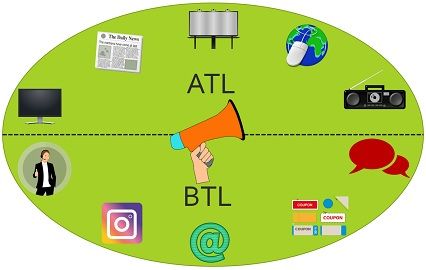 Two common marketing strategies used in the advertising industry, to promote any product or brand are – Above the line (ATL) and Below the line (BTL). Above the line (ATL) marketing is used when mass media is deployed to give a boost to a brand and reach the maximum audience.
Two common marketing strategies used in the advertising industry, to promote any product or brand are – Above the line (ATL) and Below the line (BTL). Above the line (ATL) marketing is used when mass media is deployed to give a boost to a brand and reach the maximum audience.
On the other hand, Below the line (BTL) marketing is sort of one to one communication, wherein different techniques are used to reach a specific group of people.
The basic difference between the two types of marketing strategies lies in the medium of communication used and the commission charged by the advertising agency, which is extremely important to know so as to understand what’s best for your business and the type of campaign planned.
Content: ATL Vs BTL Marketing
Comparison Chart
| BASIS FOR COMPARISON | ATL MARKETING | BTL MARKETING |
|---|---|---|
| Meaning | ATL stands for Above the line marketing, which entails mass media methods so as to target a wider audience. | BTL expands to Below the line marketing, which is used when the company wants to target a small but specific group. |
| Marketing Medium | Uses conventional marketing mediums such as TV, Radio, Print media, Internet, etc. | Uses offbeat marketing mediums such as exhibitions, trade-shows, telemarketing, email marketing, etc. |
| Target | Mass Audience | Specific group of Individuals |
| Objective | To create a brand identity and establish brand awareness. | To generate sales. |
| Cost | Costly | Budget-friendly |
| Result | It drives customer response. | It increases the point of sale. |
| Response Rate | Difficult to measure. | Easy to measure. |
| Communication | One-way communication | Two-way communication |
Definition of ATL Marketing
Above the line, popularly called as ATL uses conventional marketing medium that attempts to reach a large group of audience with a message aimed at reinforcing a brand and also to communicate basic information about the product, so as to generate a response. That is why it is also referred to as mass marketing.
The communication language and message created is in such a way that the audience can understand and connect to it easily.
ATL Marketing is done at the macro level, to cover a mass audience. It includes non-targeted advertising activities having a wide reach, so as to create a brand image. In this, advertising through TV, radio, internet, newspaper, posters, banners, billboards, and magazines.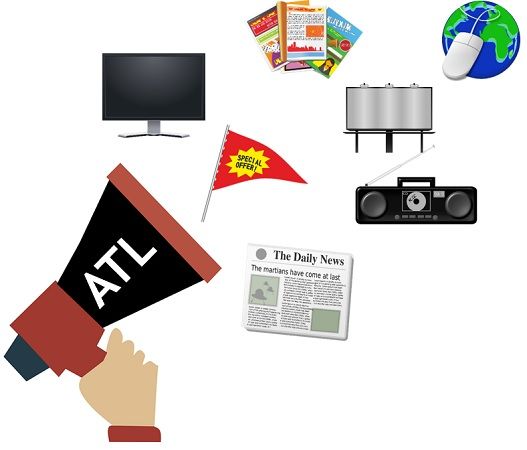 Further, when ATL media is used the primary focus is to create brand awareness, educate customers about the offerings and boost sales. It is mainly adopted by B2C (business to consumer) companies as they seek to reach a large number of people in just one go.
Further, when ATL media is used the primary focus is to create brand awareness, educate customers about the offerings and boost sales. It is mainly adopted by B2C (business to consumer) companies as they seek to reach a large number of people in just one go.
Is hoarding ATL or BTL?
Definition of BTL Marketing
Below the line marketing or otherwise known as BTL marketing involve direct marketing activities, as they intend to build targeted relationship amidst the marketer and final consumer, as well as it provides ease in testing effectiveness and conversions.
BTL marketing is unconventional, carried out at the micro-level as it focuses on specific group either geographically or demographically on the basis of interest or on a niche segment. It involves specific, catchy and direct means of communication to promote the product. It is mainly deployed by B2B (business to business) companies, however, some B2C companies also opt it.
The primary focus of the BTL strategy is to convert leads into paying customers. It includes activities such as direct mail campaigns, sales promotion, public relations, text marketing, gift vouchers, shopfront activity, telemarketing, exhibition, social media marketing, trade shows, flyer distribution, catalogues, sponsorships etc.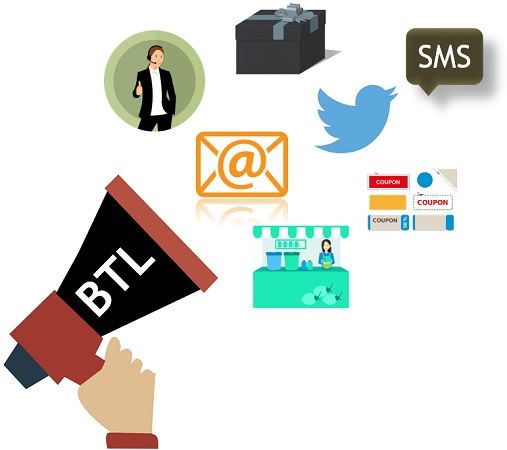 It also encompasses product demos and distribution of samples at busy places, such as malls, residential complexes, etc.
It also encompasses product demos and distribution of samples at busy places, such as malls, residential complexes, etc.
Key Differences Between ATL and BTL Marketing
The points given below are noteworthy so far as the difference between ATL and BTL marketing is concerned:
- Above the line (ATL) marketing is a mass promotional activity, carried out for creating brand image and awareness. On the contrary, BTL, i.e. Below the line marketing is a targeted promotional campaign, which is used to initiate direct interaction with the particular group.
- ATL marketing involves the use of primary mediums such as TV, Radio, Print media, Internet, etc. to promote a brand and create awareness among the audience. In contrast, BTL marketing uses offbeat mediums such as mailshots, telemarketing, sponsorships, etc. which targets a specific set of audience.
- ATL marketing is used when the target audience is huge, i.e. the promotional campaign is all about mass viewership. Conversely, BTL marketing is deployed when the target audience belongs to a specific area or a small specific group.
- Above the line advertising methods are useful when the focus is to create brand awareness among people, whereas below the line method is used to establish direct relationships with the potential customers/clients.
- When it comes to cost, the ATL marketing medium is comparatively more expensive than BTL marketing mediums.
- While ATL marketing drives customer response, BTL marketing increases the point of sale.
- When the company uses ATL marketing, it is difficult to measure results because it is not possible to evaluate the commission on the basis of the campaign as well as how much the sale increased due to the campaign. On the contrary, with BTL advertising one can measure the results of the campaign.
- ATL marketing is one-way communication, wherein a message is targeted to the audience. On the flip side, BTL marketing is two-way communication, between the marketer and consumer which helps in building strong relationships with the customers/clients.
Inference
In a nutshell, we can say that ATL marketing is an extensive brand-building activity, whereas BTL marketing is extremely targeted direct marketing activity, which stresses on personalization and conversions. Hence, ATL marketing focuses on the undifferentiated segment, but BTL marketing focuses on the targeted segment.
What is ATL and BTL with example?
ATL MARKETING DEFINITION: ABOVE-THE-LINE MARKETING – WIDESPREAD BRAND-BUILDING ADVERTISING
BTL MARKETING DEFINITION: BELOW-THE-LINE MARKETING – HIGHLY TARGETED DIRECT MARKETING FOCUSED ON CONVERSIONS
TTL MARKETING DEFINITION: THROUGH-THE-LINE MARKETING- INTEGRATED ATL AND BTL MARKETING CAMPAIGNS
Still confused? No problem, we’ll discuss these in more detail below.
First, where do the terms come from and what is the ‘Line’ in marketing?
The terms ATL and BTL were first used in 1954 after Proctor and Gamble began paying advertising firms separately (and at a different rate) from other suppliers who dealt with more direct promotional efforts. In effect, marketing that was more broad in nature was separated from marketing that was more direct in nature.
“THAT IS THE ‘LINE’ IN MARKETING – IT SEPARATES DIRECT MARKETING FROM HIGHER LEVEL BRAND MARKETING.”
The term TTL is a relatively recent one, although to be honest I am unsure of exactly when this was first used. In any case the term TTL was coined to explain a more integrated marketing approach, which combines both the widespread and direct approaches, rather than the traditional ATL/BTL separation.
You will see these terms used with the word ‘Advertising’ too, although I’ll mostly be using ‘Marketing’ below. However, the content will apply as well to ‘Advertising’ as it does to ‘Marketing’.
More detailed definitions of ATL, BTL and TTL marketing
Here is a description of the terms mentioned above – we’ll then go on to look at a few examples a bit further down this post.
ATL Marketing Definition
‘ATL Marketing’ stands for ‘Above The Line Marketing‘. This kind of marketing is the kind of marketing that has a very broad reach and is largely untargeted. Think about a national TV campaign, where viewers across the nation see the same advert aired across the various networks.
This kind of marketing is mostly used for building brand awareness and goodwill.
BTL Marketing Definition
‘BTL Marketing’ stands for ‘Below The Line Marketing‘. This kind of marketing is the kind of marketing that targets specific groups of people with focus. For example, a leaflet drop in a specific area, a Google Adwords campaign targeting a certain group or a direct telemarketing campaign targeting specific businesses.
This kind of marketing is best for conversions and direct response.
TTL Marketing Definition
‘TTL Marketing’ stands for ‘Through The Line Marketing‘. This kind of marketing is really an integrated approach, where a company would use both BTL and ATL marketing methods to reach their customer base and generate conversions. It might seem obvious, although not all marketing campaigns are like this – some are ATL only and some are BTL only (it would be much more common to see a BTL-only marketing campaign in practice though).
This kind of marketing delivers both a wide reach and a focus on conversions.
Examples of ATL, BTL and TTL marketing activity
An Example Of Above The Line Marketing Activity
An example of Above The Line marketing would be a television campaign run by a cereal company. The ad would be aired across the nation, with every viewer seeing the exact same message. As mentioned above, this kind of marketing would be used to build general brand and awareness of the business and/or it’s products over the long term as well as goodwill.
(There would be no offers or incentives involved here).
An Example Of Below The Line Marketing Activity
The same cereal company could also run a direct marketing campaign in a large city, targeting commuters on the way to work. They might offer free cereal samples along with vouchers that could be used in a local store. This would be a strategy designed to target a specific group of people and to try and encourage quick purchases, or conversions.
A similar example of this that you might have seen before is the Red Bull Mini (shown below).
An Example Of A Through The Line Marketing Activity
In this example, a pizza company could launch a nationwide Youtube campaign that would show different video ads to different users according to where the users lived, featuring a promotional code for a discount on purchases made at their local outlet.
As you can see, this is a combination of both of the other forms – ATL in terms of it’s wide reach, BTL in terms of its targeted nature and conversion focus.
A few visual examples
Here are a few adverts that might help explain this in more detail:
ATL Marketing Example Image
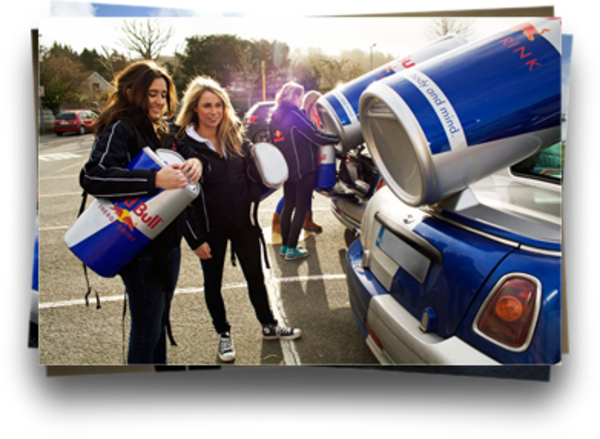 |
Are they relevant to small businesses?
I guess that they would all be relevant to small businesses, depending on the business, the type of product they have and the target audience they have in mind. For example, BTL marketing can sometimes be the best solution for a small business serving a local catchment area.
However, if I’m thinking about the most ideal solution for the average small business owner that’s trying to serve a wider area, I’d have to say that TTL marketing was the most relevant these days. The reason for this is that put simply;
“TTL MARKETING CAN BE DEFINED AS JUST ANOTHER WAY OF DESCRIBING A WELL DESIGNED, INTEGRATED MARKETING CAMPAIGN. YOU’RE USING SOME MARKETING CHANNELS WITH A WIDE REACH TO DRAW PROSPECTS INTO OTHER CHANNELS THAT ARE DESIGNED FOCUS ON CONVERSION.”
So, in that respect, it’s probably not worth worrying too much about the terms if you already have a fully developed, multi-channel marketing plan in place that helps to increase your overall brand awareness while targeting individual segments/prospects with direct response efforts once you have them in your funnel.
A successful integrated/TTL marketing campaign gives small businesses the reach and focus on conversions that can mean a very successful overall marketing campaign. Plus, as small business owners, we now have the tools and resources at our disposal to run truly effective TTL marketing campaigns, such as social media networks, sites such as YouTube as well as PPC platforms such as Adwords. They give us the reach and the focus to implement marketing strategies that have a wide reach, yet narrow focus.
However, the following points are probably worth bearing in mind when thinking about this in practice:
– Keep it digital – printed advertising/TV slots and radio are very expensive, and difficult to measure
– Digital methods such as PPC and social media allow national coverage, but in a very targeted way to suit small business needs and budgets
– Digital methods are easy to track and measure, meaning less waste and more chance of success
– All of your marketing messages should be consistent and clear at every stage (TTL campaigns work because they get the point across well all the way from brand building to conversion)
Are the ‘Lines’ becoming a bit ‘blurry’?
Now that you are up to speed on the definitions, you may be wondering if the ‘Lines’ are becoming a little ‘blurry’ in the modern age – if so, I’d say that’s a valid point to hold.
Here’s why.
The traditional ATL/BTL/TTL separation
So, as we have discussed above, the traditional separation of the ‘Lines’ goes as follows:
– Above the line: ‘brand building’ based advertising solely
– Below the line: direct, response driven marketing solely
– Through the line: ATL methods designed to feed leads into BTL based campaigns
It used to be that the following kinds of media would be considered ATL marketing activity:
– Television
– Radio
– Newspaper/magazine ads
And the following kinds of marketing would be considered BTL marketing activity:
– Door to door sales
– Telemarketing
– Direct mail
And TTL campaigns would be an integrated mix of the two.
It seems simple enough and it definitely works like that in practice, most of the time anyway.
However, the distinction described so far was mostly due to the fact that marketers and advertisers were much more limited as to what they could really do with platforms they had available to them. However, we have many more platforms and much more technology available to us. In effect, we can achieve BTL type results using what were once considered ATL methods. So now there are times when the lines seem blurry and the specific instance doesn’t fit the above criteria very well.
We’ll discuss that in more detail now, using social media as an example.
The blurring of the ‘Lines’ – the effect of social media on ATL/BTL/TTL marketing activities
One such case in which it becomes difficult to classify whether a promotional activity should be termed ATL, BTL or TTL is when you use images within your social media campaigns.
For example, consider the following:
Let’s say you want to use an image in your social media campaign and you wonder if it should be considered ATL, BTL or TTL. You realise that social media offers a huge reach and hefty exposure – meaning it could be considered ATL – but that it can also be very highly targeted, so it could be BTL too. So, does that mean it should just be considered TTL then?
The answer is ‘Probably, but not all of the time’ – to effectively classify this, we would have to begin by asking a couple of questions:
Working out your intent
First, what is my intent with the image?
– Is it used to generate some kind of response?
– Or is it used only to add to the appeal/goodwill of the brand?
– Or is it being used as a Facebook Ad and thereby targeted so that a very specific audience can see it/share it/like it?
For example, it could be that the image was used with a message saying something like ‘Get 10% Off’ and was delivered through the Facebook Ad Platform – this could be classified as a BTL campaign regardless of the fact that a social media platform is being used as response driven messaging specifically targeted to certain market segments.
The strict TTL option would be if the image was used to promote ‘10% Off’ but was only added to to the page as a normal image so that anyone who ‘likes’ the page could see it (therefore it’s not nearly as targeted).
Also, note that because the image contained a 10% offer, it could not be considered ATL as it has a direct response element attached to it – the only options are below-the-line or through-the-line.
In short, I’d say the Through the line method was the most applicable in situations as described above, but hopefully you can see why this would not always be the case. In every case the answer depends on a couple of variables, although you should be able to work it out by asking yourself the questions outlines above.
Now, let’s have a look at a list of 20 common ATL and BTL marketing methods
Above-the-Line (ATL) Promotional Actvities
All of the ATL promotional methods below are very similar in intent, they only differ in advertising medium (therefore there is little point in me writing different descriptions for each). You’ll have first hand experience of this type of marketing – brand-building adverts that are run across the nation, designed to keep products in your mind at all times. As discussed above, there is no direct response element here, they are only deployed to increase brand awareness and goodwill.
– Television advert
– Newspaper/Magazine advert
– Radio advert
– Tube Underground advert
– Outdoor billboard
– Cinema advert
– Premier football league sponsorship (okay, maybe not for most small businesses anyway, so we won’t count this one)
I would like to say a quick note about the following option however as I think it differs slightly from the ‘traditional’ methods above.
General social media profiles
Put simply, social media (in fact, all of the internet technology we are all familiar with nowadays) was not around when the ATL/BTL distinction was developed back in the 1950’s. And, in modern times, social media is actually pretty difficult to define as either ATL, BTL or TTL (we will discuss that properly further down this post).
However, I think that generally speaking, social media profiles can be considered ‘Above-the-Line’ because they are set up and published for all to see. What we do within these profiles can be considered ATL, BTL or TTL, although the basic profile itself should be classed ATL.
Now, we’ll have a look at some of my favourite Below-the-Line methods.
Below-the-Line (BTL) Promotional Activities
Here are some BTL marketing ideas for you to consider:
Intelligence-based telemarketing
Telemarketing, but not as you know it. This kind of phone-based marketing is all about research and being smart – you’ll have researched the company/person in detail and you will know exactly what you can do for that specific person. There is no thundering your way through a phone-book here – you’re contacting a list of pre-screened people you are sure you can help.
You can read more about this in my free 12,000 word guide on modern day telemarketing.
Targeted leaflet drop
Check your local authority rules here, but a great way of generating some quick business is through a targeted leaflet drop. For example, if you supply garden maintenance services to residents of a particular area, a well designed leaflet containing an offer might just do the trick. Just make sure that you are allowed to drop leaflets through residences of your target area by law. If so, this can be an excellent advertising medium.
Tradeshow/exhibition Staff
Tradeshows and exhibitions are a great way to get right in front of your target audience. You are your products and services have the chance to directly engage with potential buyers and influencers – the rewards can be substantial. I’ve actually written a post on how you can go about generating leads at tradeshows and exhibitions – you can get to that here.
Shopping center stand/Mall stand
In-person demonstrations
Arranging in-person demonstrations is one of my most favourite BTL methods for the promotion of products, particularly B2B. What can be better than arranging a private demo of your product with someone who has expressed their interest in what you offer? This can also be done online with systems such as Go To Meeting and similar.
Door-to-door selling
This was actually how I started my marketing career, although the effectiveness of the practice now is not as great as it once was. However, if you treat it the same way as I mentioned in the intelligence-based telemarketing section above, door-to-door marketing can still be very profitable.
Direct mail marketing
We all hate Spam, although there is no question that direct mail marketing works well if it is executed properly. Even blind mailings (to a specific geographic location relevant to your business) work, although it’s much better to send mail to people who have already opted in to hear from you. Past customers, people who have requested more information or updates – that’s where you’ll get the best response.
Catalogues
Email marketing
This is hands-down the most effective BTL marketing method there is. The headline figure is that it returns an average of $43 per $1 invested – a truly staggering ROI, if it’s done correctly. I couldn’t do that justice in this post, although I have written a checklist guide here to help you get started.
PPC/Social media ads
PPC/social media ads can be extremely well targeted and therefore should be considered for any BTL marketing campaign. While I said above that social media profiles are ATL in nature, any ads that you run through them are BTL as they should have a level of targeting attached to them. PPC ads are the same – even although they use a global platform with incredible reach, they are still specifically aimed at a certain segment of the population (at least they should be anyway). Here is a bit more information on getting started with PPC.
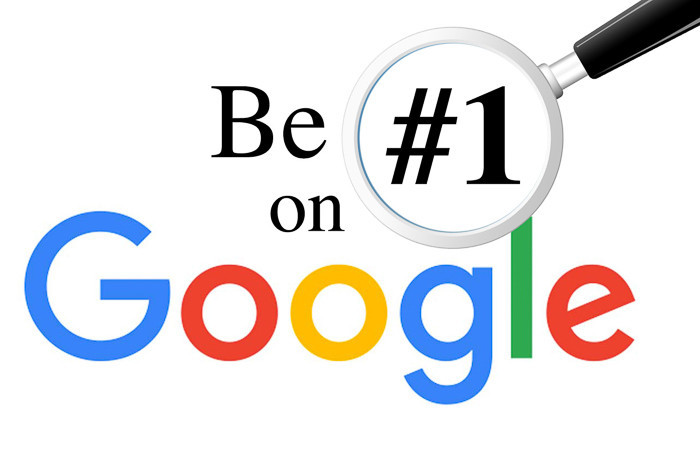
Remarketing
Similar to PPC ads, although I wanted to mention this separately as you can use this to specifically re-engage website visitors, people who have abandoned shopping carts or who have disappeared from any part of your sales funnel for any reason. Very powerful and definitely worth looking into, this is one of my favourite BTL marketing ideas listed here.. Here is a short guide on how you can start.
Post-sales coupons/incentives
Another direct BTL method is that of promoting coupons/deals/incentives to past customers. It’s much, much easier to sell to an existing customer than it is to a new one, so I like this method very much.
Point of sale promotion
Finally, I’d like to mention point of sale promotion. Specifically, I’m thinking about ‘upsells’ and ‘downsells’ here – items that you can offer to people who are already making their way through a purchase with you. This can be in person or on the web through your shopping cart. It’s a fine line between pulling this off and annoying people, although if you can find a happy medium this option can add substantially to your bottom line.
Measuring your ATL, BTL or TTL campaigns
Depending on the type of campaign you launch, there will be different ways of measuring its success, as follows:
Measuring an Above-the-Line marketing campaign
As a strict ATL campaign is designed to reach a wide audience with brand building type content, these are the types of measurements you will take, for example:
– Frequency (number of times members of target audience see your ads)
– Reach (total number of people that see your ads)
– Number of impressions (how many times your ads have been displayed across various mediums)
Measuring a Below-the-Line marketing campaign
As a BTL campaign is much more targeted in nature, you will be able to measure the following types of events, for example:
– Conversion rates – from your websites/blog/direct mail campaigns/discount offers, etc
– Click through rates (CTR) – from digital ads
– Open rates – emails/marketing automation campaigns
– Website/blog/landing page visits
– Followers and subscribers – on your blog, email lists and social media profiles, etc
Measuring a Through-the-Line marketing campaign
As you can tell from the definitions provided above, TTL campaigns provide a mix of both ATL and BTL elements and therefore the measurement of such campaigns would be made up of both measurement options above.
ATL/BTL/TTL marketing meaning in infographic form
Here is an overview of the ATL/BTL/TTL marketing meanings as an infographic:
Further reading
Hopefully this post has given you a clear idea of the ATL/BTL/TTL marketing distinctions and also where it can become a bit ‘blurry’. I also hope the Top 20 list has given you a useful list of examples you can put to use in your own campaigns.
For more information, suggested read free, 118 page e-Book – The Beginner’s Guide To ATL/BTL/TTL Marketing Planning – which will give you everything you need to know to develop a succesful marketing strategy.
Top most festival Products FMCG consumers search today
World Wide Festive Trends Decoded What Indian festive consumers seek...
Read MoreHow right selection of FMCG Salesmen improves brand market share
How can FMCG Companies improve salesman’s technique in order to...
Read MoreHow most searched Fmcg sales and marketing words help newbie salesman
Why undestand FMCG sales management? Sales management is the process...
Read MoreHow Successful FMCG Salesman Starts his Day, a guide
How does one become a good sales executive in the...
Read More






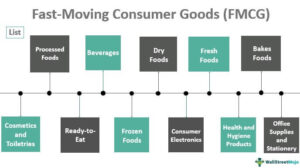




http://slkjfdf.net/ – Upakevuq Emenukadm raz.clie.digitalgumma.com.bft.vl http://slkjfdf.net/
Pingback: New FMCG brands block competition by providing increased margin and schemes
found a great marketing leader in phoenix jen miller msml mba